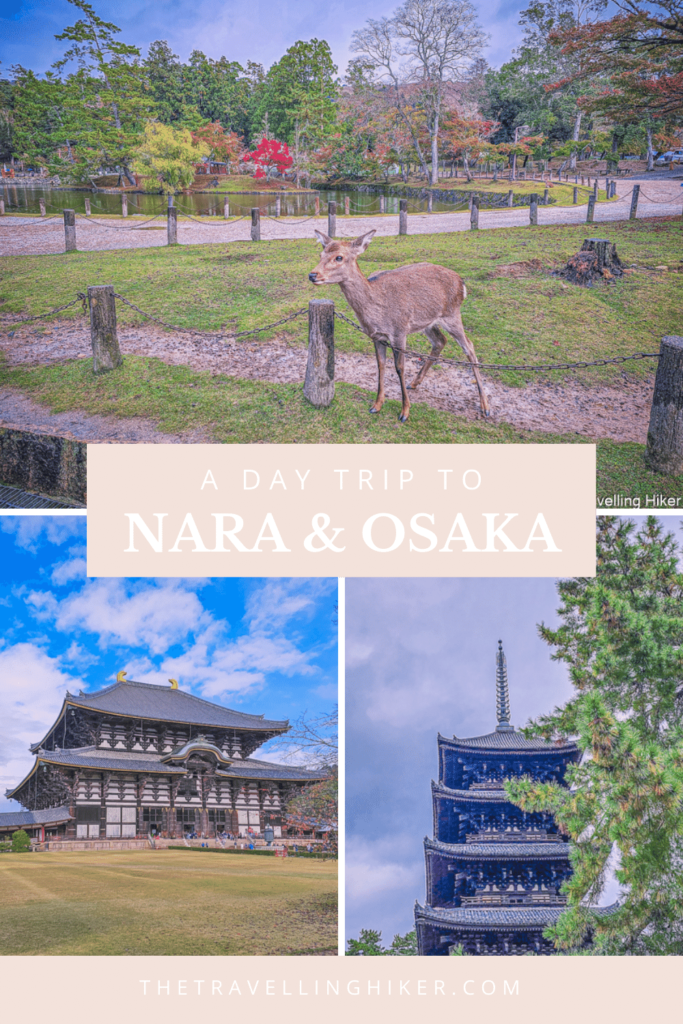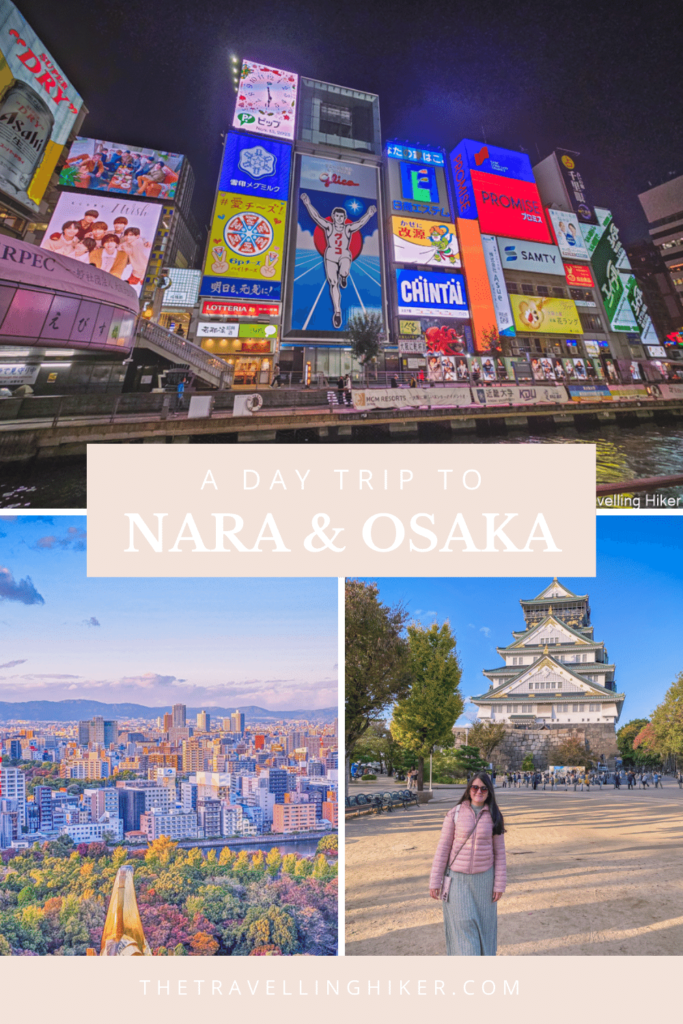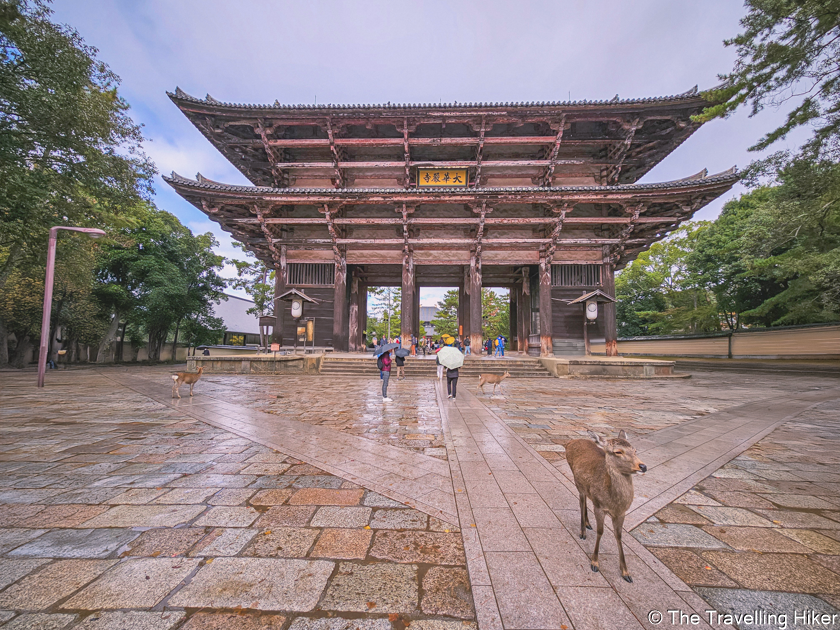Welcome to Nara! A day trip to Nara is a must-do for visitors staying in Kyoto or Osaka due to its close location. In our case, we did it from Kyoto and combined it with a quick visit to Osaka.
Nara is one of these places in Japan that will impress you. Probably, you have already seen many photos and videos of Nara Park and its many deer that live freely. It is the main site to visit, but if you’re looking for ideas for other things to do, this blog is just the place for you.
TABLE OF CONTENTS
NARA
Nara is a popular destination in Japan due to its famous deer that walk freely around it. Due to its close location to Osaka and Kyoto, it is a perfect option for a day trip from one of these cities for those who want to admire these beautiful animals.
However, Nara is much more than its deer. Here are some facts about Nara that not many people know about.
- Nara was the capital of Japan during the Yamato period between the years 710 and 784.
- The city has over 2000 temples and shrines.
- In one of Nara’s temples, Todai-ji, you will find one of the biggest Buddha statues in Japan.
- Nara is famous for its high-quality sake due to the city’s clear water and favorable weather. If you want to bring some sake home as a souvenir, you might consider buying it in Nara.
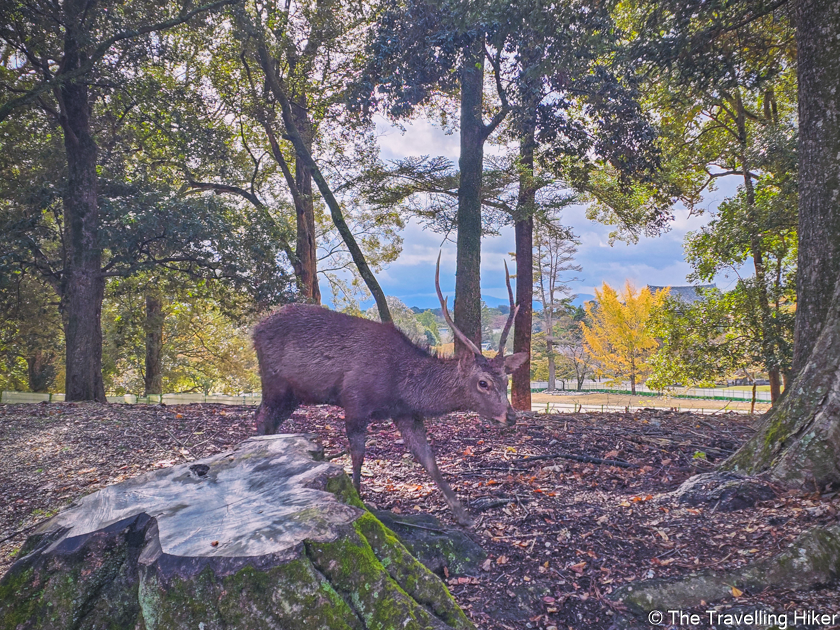
HOW MUCH TIME DO YOU NEED TO VISIT NARA?
The answer to this question will depend on what you want to see and do in Nara. One day in Nara is the perfect amount of time to see its most popular sites. However, if you have less or more time in Nara, it is also possible to visit this city.
In our case, the day we visited Nara, the weather was not the best so we decided to only spend half a day here, and combine it with an evening in Osaka.
GETTING TO NARA
From Kyoto
There are two different options to get to Nara from Kyoto.
- By using the JR Trains that connect Kyoto Station with Nara Station. You can use the rapid trains (45 minutes) or the local trains (75 minutes). This is the perfect option for those people who have the JR Pass.
- If you don’t have a JR Pass, you can use the Kintetsu trains that connect Kyoto Station with Nara Kintetsu Station. You can also choose between the express limited trains (35 minutes) or the express trains (45 minutes).
From Osaka
To get to Nara from Osaka, or if you want to do the same thing as we did, and visit a bit of Osaka on the same day, you can use the Yamatoji rapid trains. These run every hour between Nara and Osaka and will get you to your destination in 45 minutes. These trains are also included in the JR Pass.
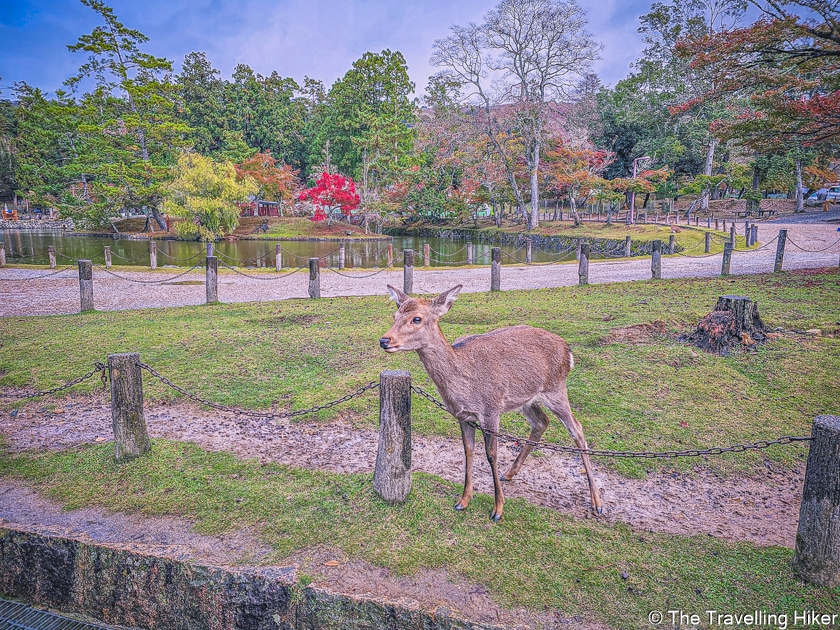
Moving Around Nara
Nara is quite a big city, so the easiest way to move around it is by using its public bus system. They are quite easy to use, particularly if you have an IC card. All you need to do is tap it when you enter and exit the bus and the exact fee will be deducted automatically.
Alternatively, you can visit the city on foot but be prepared to walk a lot.
A DAY TRIP TO NARA AND OSAKA
Here is everything we did during our day trip to Nara and Osaka. Like in all of my blog posts, these are what we did but there are other things that you can do (both in Nara and Osaka). At the end of this blog, I will list some other options in case you want to modify this itinerary or if you have some extra time in the area.
Nara Park
Our first stop of the day was, of course, Nara Park. We wanted to see the famous sika deer that walk freely around the park. There are approximately 1200 of them. According to Shintoism, sika deer are considered gods’ messengers and for this reason they are protected species.
The most common thing to do in the park is to buy sembei biscuits (specific cookies for them) and feed them. This turned out to be quite fun because if they see you have the cookies and bow to them, they bow back to get their “reward”. However, be prepared to be surrounded by deer if they see you have these cookies. We recommend that you hide them and only take them one at a time when you want to feed them. Otherwise, they will follow you around and bite you to get the cookies.

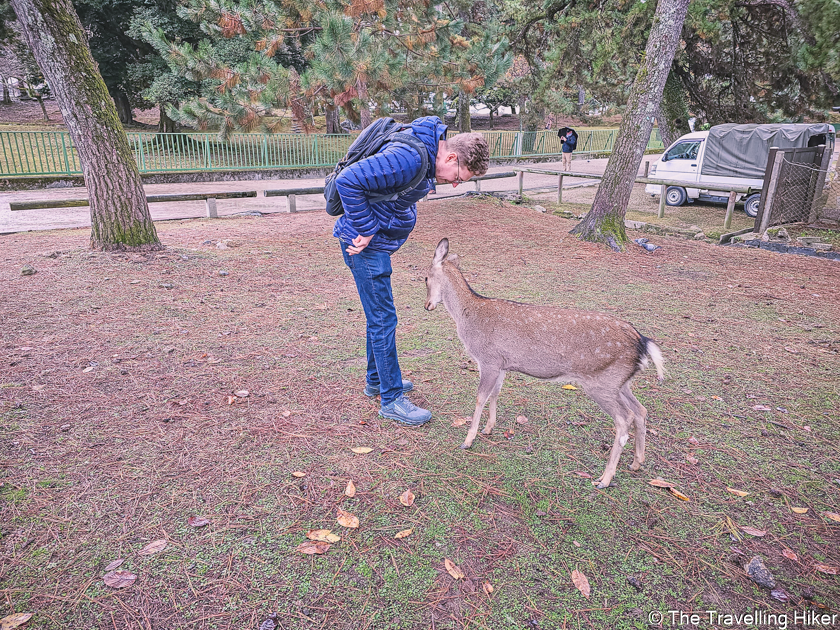
Kofuku-ji Temple
Once we were tired of seeing deer, we went to visit Kofuku-ji Temple. This temple has several buildings of great historic value such as the five-storied pagoda which is the second tallest wooden pagoda in Japan and the central Golden Hall.
This temple was impressive to see (even with the rainy day we were experiencing). My favorite part was the Central Golden Hall. We explored the grounds at our own pace, admiring all the beautiful details of this temple.
Important: The five-storied pagoda and Eastern Golden Hall are going through extensive renovations until 2031 and they are fully covered and not possible to visit them. When we visited, the top of the pagoda was still visible but that was just about it.
Practical information
- The temple grounds are free to visit but if you want to enter the Central Golden Hall, the Eastern Golden Hall, and Kofukuji’s National Treasure Museum, you will have to pay an admission fee. We only entered the Central Golden Hall but it was very interesting.
- The admission fee for the Central Golden Hall is 500 yen per person, the Eastern Golden Hall is temporarily closed and the entrance fee for the National Treasure Museum is 700 yen. When the Eastern Golden Hall is not closed it is possible to get a combined ticket for it and the National Treasure Museum.
- The temple is open daily between 9:00 and 17:00.
- Always check for the latest information about prices and opening hours at Kofuku-ji’s official website.
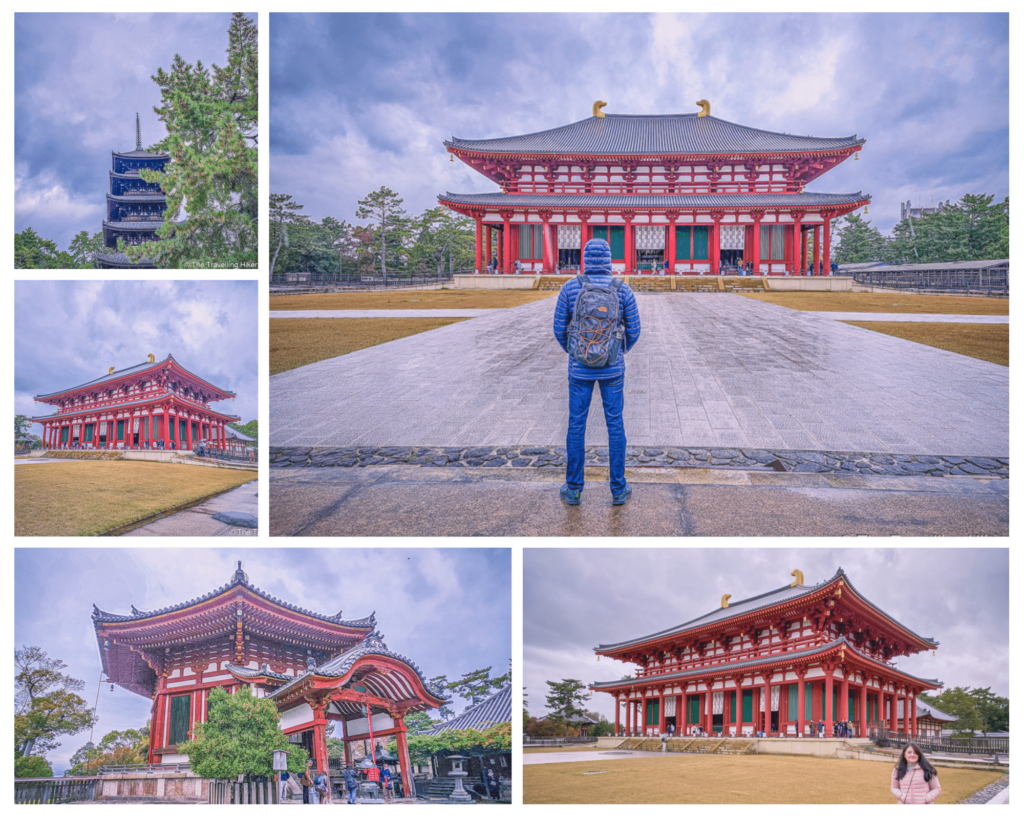
Todai-ji Temple
Our next stop, also within Nara Park, was Todai-ji Temple. This temple is probably the most famous in Nara, due to the big Buddha (Daibutsu) inside its main hall. The Buddha statue is 15 meters tall and it is flanked by two smaller statues of two Bodhisattvas.
One of the pillars that supports Todai-ji’s main hall has a hole, which is more or less the same as the nose holes of the Buddha statue. According to folklore, it is said that those who fit through this hole will reach enlightenment. We didn’t try it, but if you find it, you can always try it!
But the Buddha and its main hall, are not the only things to see in Todai-ji. While visiting this temple, you should also see its huge Nandaimon Gate, Nigatsudo Hall from where you will get a nice view of the city and Hokkedo Hall.
Practical information
- The temple is open daily between 7:30 and 17:30 from March to October and between 8:00 and 17:00 from November to February.
- Admission fee to the Daibutsuden (Todai-ji’s main hall), Hokkedo Hall and Todai-ji’s museum is 800 yen per person for each building. You can also buy a combined ticket to the Daibutsuden and the museum for 1200 yen per person.
- Always check the latest information about prices and opening hours in Todai-ji’s official website.
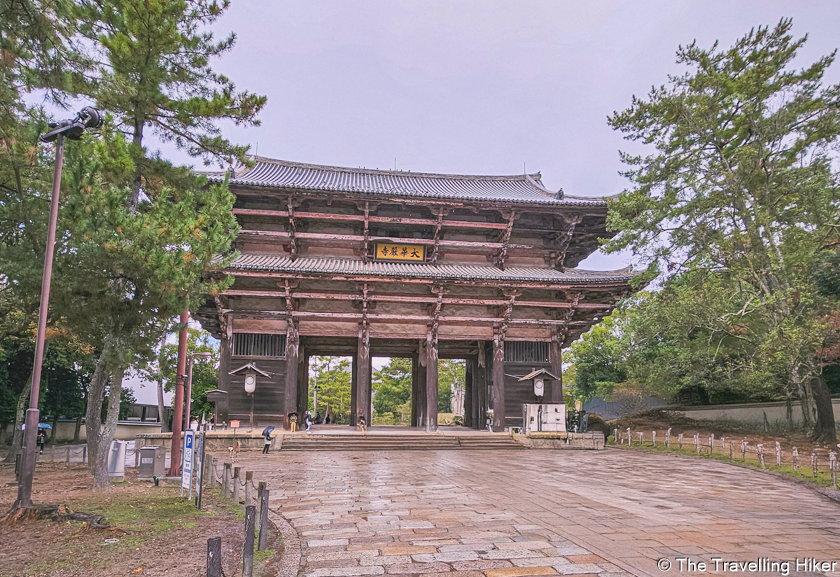
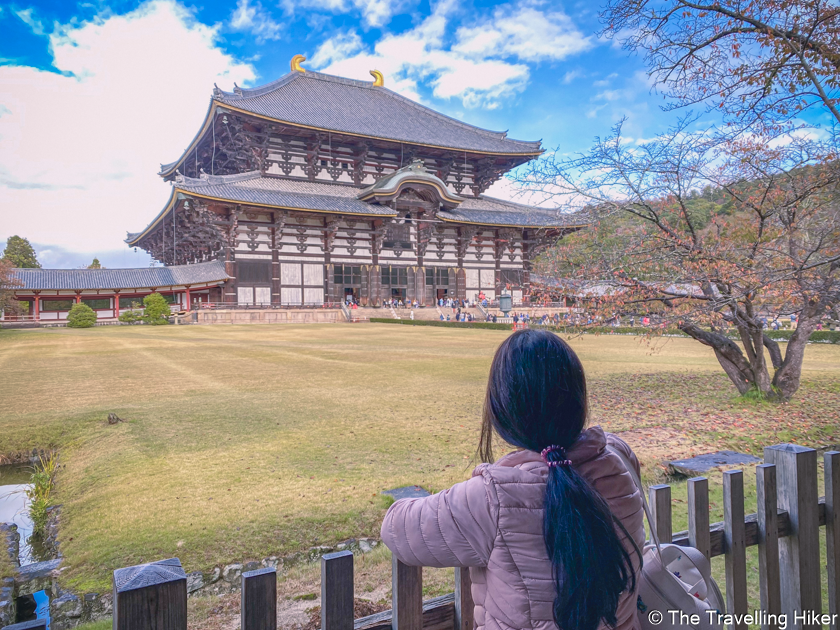

Tamukeyama Hachimangu Shrine
Right next to Todai-ji Hokkedo Hall, we found the Tamukeyama Hachimangu Shrine. This was a small shrine but with a lot of charm. Particularly we loved the entry to the shrine surrounded by many trees, torii gates, and the deer peacefully walking by you.
Osaka Castle
After the last shrine, it started raining quite a lot so we decided to hop on a bus back to the train station and spend some of the afternoon and evening in Osaka. I would have liked to visit some other places in Nara, but our timing was perfect because the big storm happened during our train ride to Osaka.
In Osaka, we first visited Osaka Castle. The castle we see today is a reconstruction since the former castle was destroyed a couple of times throughout its history. This doesn’t make it any less impressive.
I really liked the visit to Osaka Castle, with its green roof and golden tigers that decorate its façade. Inside the castle, there was a museum showing the history of the castle which was not very interesting as most of it was in Japanese. However, entering the castle was worth it for the beautiful views of the city and sunset we got to see from it.
Practical information
- The castle is open between 9:00 and 17:00.
- Admission ticket is 600 yen per person.
- There is an elevator inside the castle so people with mobility issues can visit as well.

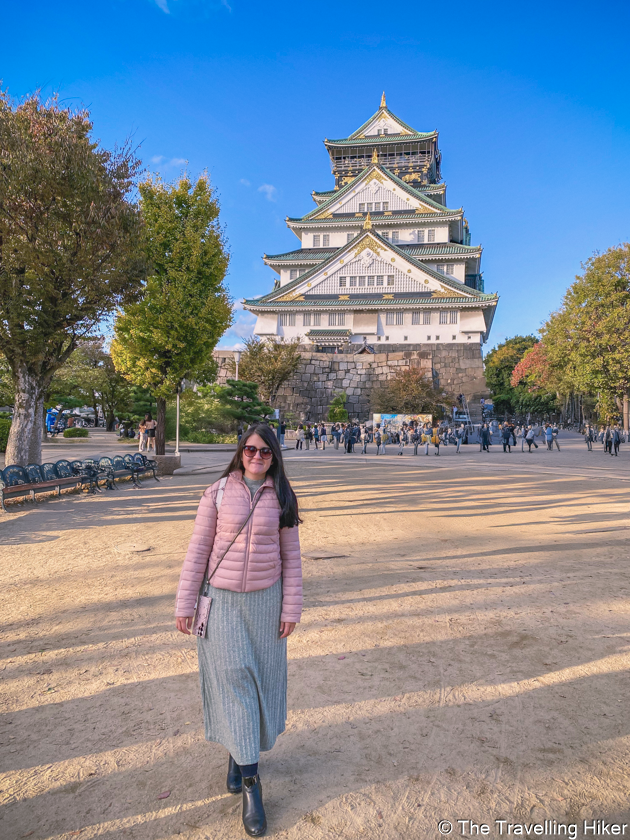
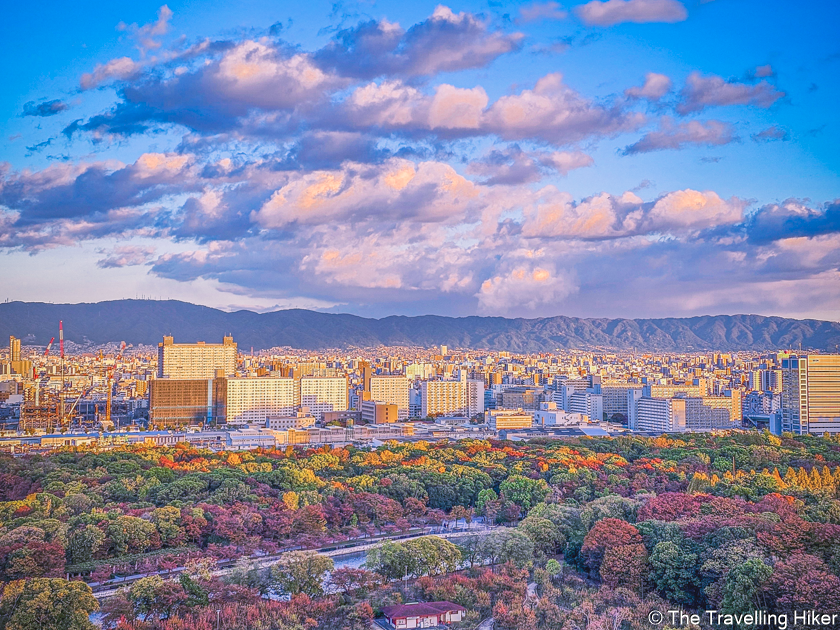

Dotonbori
Our last stop of the day was the famous Dotonbori, a very popular area in Osaka. Dotonbori is full of restaurants decorated with neon lights and with 3D representations of the food and dishes they offer.
The most famous neon in Dotonbori is, of course, Glico Man, which has become a symbol for the city of Osaka. This neon was installed in 1935 and its dimensions are 20 meters high and 10 meters wide. In the past, you could see the Osaka skyline behind Glico Man but now, you can only see a blue running track.
When in Dotonbori, you definitely have to eat an Okonomiyaki Osaka Style and some Takoyaki.
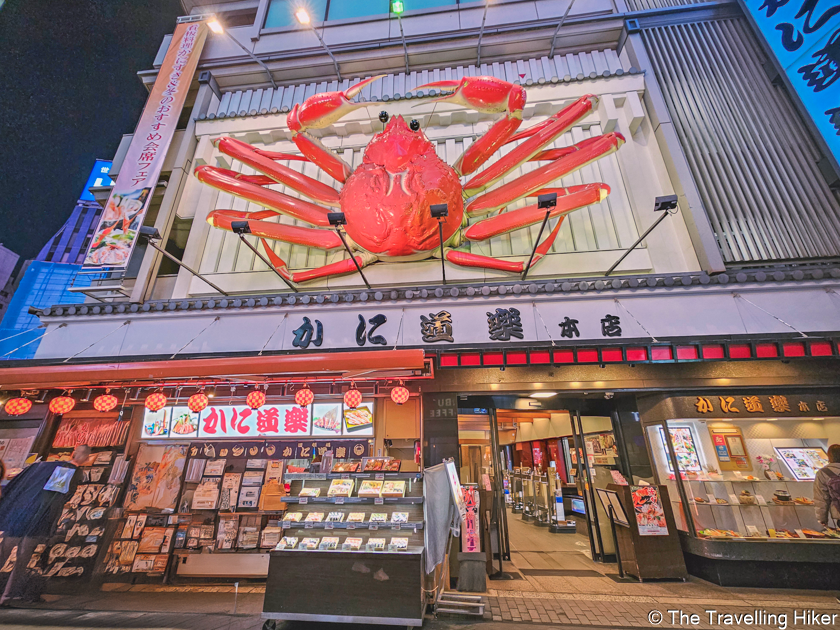
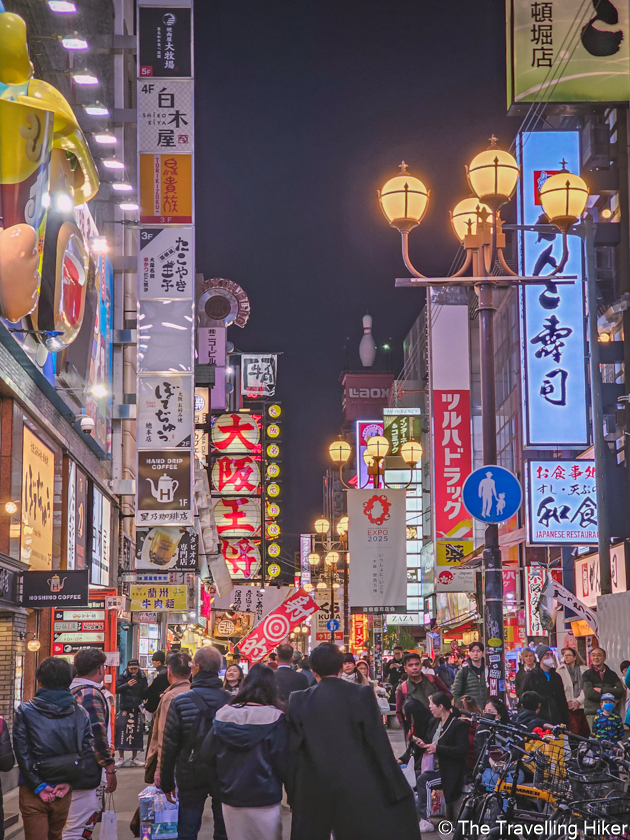

Other Things To Do In Nara And Osaka
Here are other options to include in your visit to Osaka and Nara.
Nara
- Kasuga Taisha Shrine. A shrine full of copper and stone lanterns.
- Naramachi, the old commercial district of Nara.
- Heijo Palace.
- Namba Yasaka Shrine, famous for its main hall in the shape of a lion.
- Umeda Sky Building, where you will get amazing views of Osaka.
MAP WITH ALL LOCATIONS
And that’s it for this week’s blog. I hope you liked it and found it useful. Let me know what you think in the comments!
DISCLAIMER: Did you know? This blog uses affiliate partnerships. When you click and book or make a purchase through one of my blog posts, I may receive a small commission (at no extra cost to you). Thank you for supporting The Travelling Hiker!
OTHER ARTICLES ABOUT JAPAN
- PLAN A TRIP TO JAPAN ON YOUR OWN
- THE BEST GUIDE TO TOKYO’S NEIGHBORHOODS
- THINGS TO DO IN ASAKUSA
- THINGS TO DO IN CHIYODA
- BEST THINGS TO DO IN ODAIBA ISLAND
- 3 AMAZING DAY TRIPS FROM TOKYO
- HOW TO SPEND A DAY IN HAKONE: BEST THINGS TO DO
- A DAY TRIP TO NIKKO FROM TOKYO
- A DAY TRIP TO KAMAKURA FROM TOKYO
- THE 11 BEST THINGS TO DO IN TAKAYAMA
- THE PERFECT DAY TRIP TO SHIRAKAWA-GO
- THE ULTIMATE HIROSHIMA TRAVEL GUIDE
- MIYAJIMA ISLAND – THE BEST THINGS TO DO
- A DAY TRIP TO HIMEJI AND KOBE
- 3 DAYS IN KYOTO ITINERARY
- A DAY TRIP TO NARA AND OSAKA
- 4 DAYS IN TOKYO – THE BEST ITINERARY
- THE BEST THINGS TO DO IN SHIBUYA, TOKYO
- THE BEST THINGS TO DO IN MINATO, TOKYO
- THE BEST THINGS TO DO IN SHINJUKU, TOKYO
- 20 DAYS IN JAPAN – ITINERARY FOR FIRST TIME VISITORS
ENJOYED THIS GUIDE? PIN IT FOR LATER!
